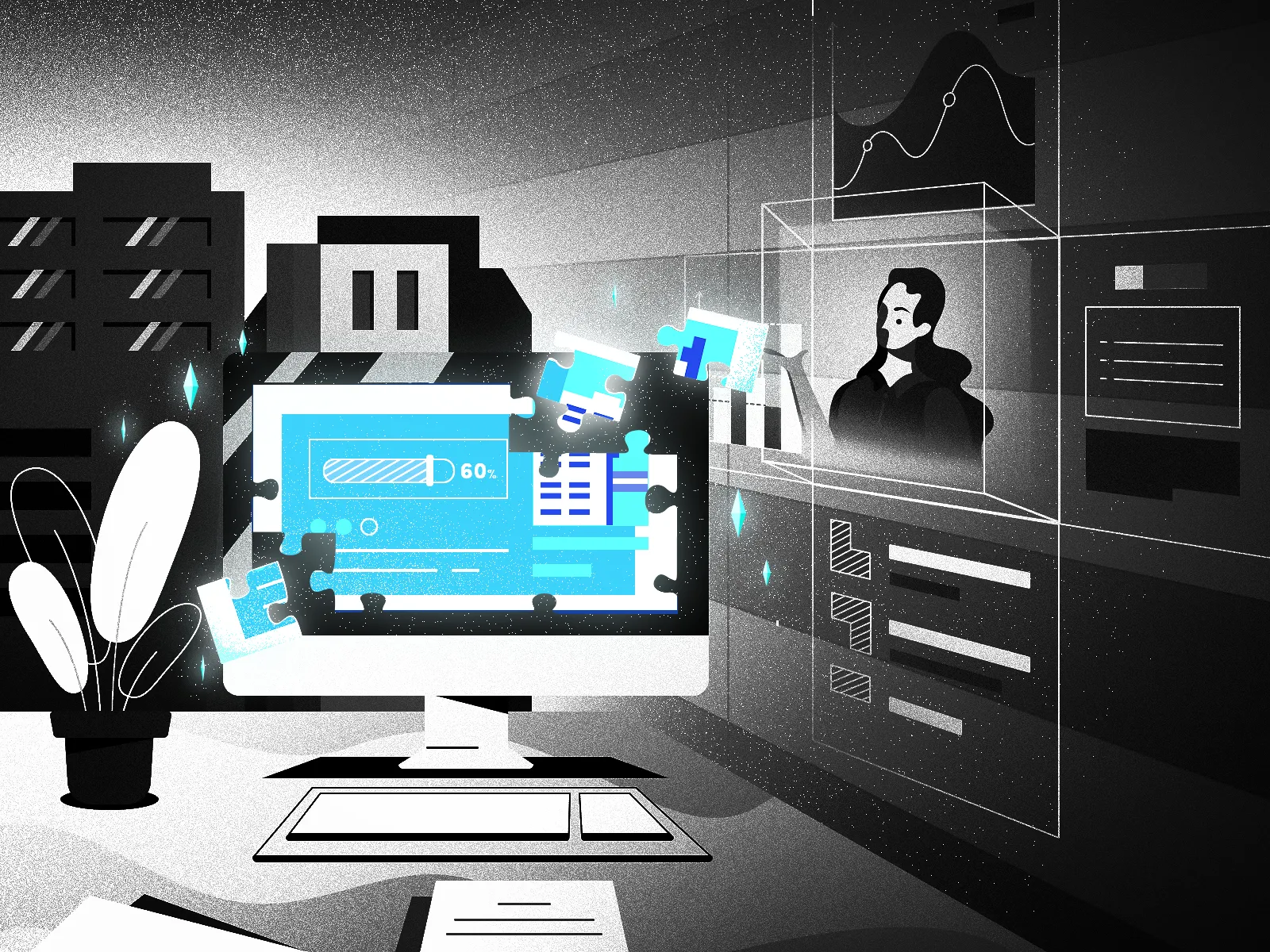Have a disruptive idea but can’t seem to find investors?
That’s partly what the ICO boom was all about—entrepreneurs with business ideas but not the capital to get them off the ground.
So they turned to crypto, and built upon the Ethereum blockchain crypto tokens that they’d then sell to retail and institutional investors. The entrepreneurs would then have the capital needed to start building their blockchain-based services, while investors would quietly watch as their initial investment grew with the company.
While the fund-raising mechanism turned into madness–with thin projects being hyped and raising millions without so much as a whitepaper–that shouldn’t deter you from thinking of crypto tokens as revolutionary.
Because the concept of tokenizing both real-world and digital assets promises to upend a number of industries and make them more efficient, affordable and transparent.
So for the entrepreneurs and builders out there, here’s a 10-step guide to building your next million-dollar (or should we say million token) idea on blockchain technology. We’re going to use "CarCoin"—a totally hypothetical, made-up crypto token—to walk you through the process of tokenizing a business that would fund a self-driving car for the burgeoning gig economy.
The basic idea is that token holders can invest in purchasing, maintaining and servicing the car. In return, they’ll receive some of the car’s Uber income every month. The token holders will also be able to vote on what the car should be used for next.
Happy buidling.
Step 1: Choose an asset
Nearly any asset can be tokenized.
Crypto tokens are simply representations of existing assets that run on a blockchain. Your job is to decide which part of the asset you’re going to tokenize. With CarCoin, we could tokenize one car, a fleet of cars, or even a platform where vehicle owners can post their own cars to be tokenized.
For our example, we’ll tokenize one car, with each CarCoin token representing an ownership share.
Step 2: Define a business model
How will your project make money? Indeed, will it?
Many token projects have opted to create non-profit foundations that manage tokens, govern the protocol and sometimes fund events and conferences. But for-profit startups are also launched to provide services on top of the open-source protocol.
You can raise money from the sale of tokens and then once you’ve built the platform, you can charge fees, either for transactions or subscriptions.
CarCoin will be used by our startup CryptoCar. For managing the car’s maintenance and legal documents, CryptoCar will take a 1% fee from token holders.
Step 3: Define the tokenomics
Now we need a system of incentives and punishments that will influence the behavior of our users and token holders. This process is called tokenomics.
“Investors will only invest if they think the underlying asset will gain value and/or generate revenue for them,” said Luc Falempin CEO of Tokeny, a vendor for issuing, managing and transferring tokens.
By carefully considering how the entire system works, we’ll be able to maximize desirable actions and minimize harmful ones.
For CarCoin, we want to incentivize token holders to care about the upkeep of the car and we do this by allowing them to collect revenues every month from the car’s service. Because users will want to maximize the amount of money they receive every month, they’ll take a stake in the car’s maintenance, plus vote for processes that will enhance the service over time.”
Step 4: Select a blockchain
The big question for crypto startups at the outset is which blockchain they’ll choose. That’s not easy to answer since the underlying technologies and ecosystems are in flux. Transaction speeds, security and community support differ from platform to platform; your blockchain of choice will depend on how you prioritize those features. (Here are some places to do your research.)
For CarCoin, we’ll choose the leader in dapp development, Ethereum, because it has the most active developers and active token projects of all the blockchain platforms, as well as a comprehensive and growing selection of developer tools.
Step 5: Develop an MVP
A minimum viable product, or MVP, is a good sign that you as an entrepreneur are serious about the project and your team can actually build it.
This is especially true after the ICO mania and regulatory crackdowns of 2017 and 2018. Today blockchain products are under more scrutiny than ever before.
An MVP is not only a great practical thing to build, it is also something that you can give a number of beta testers access to.
CarCoin’s MVP will define an early revenue distributing mechanism, whereby the code automatically pays out monthly profits in the token based on how much CarCoin a specific investor has.
Step 6: Write the white paper
The whitepaper serves as the business proposal for your project. It ought to play out in plain and convincing language the underlying tokenomics and technical aspects of the project protocol. It’s also important to make the case that your team has the expertise needed for the project to succeed.
There are various so-called white paper mills, but outsourcing the job to one of these agencies can cost anywhere between $1,000 and $50,000. Plus we won’t know whether the contractor writing the paper has the technical knowledge to fully describe our protocol. As such, CarCoin’s CEO, who used to run an Uber-like car service, is going to take several weeks to write our white paper.
Step 7: Pick a base of operations
Though regulations vary greatly depending on the country, several jurisdictions have emerged as more “crypto-friendly” than others.
Places like Switzerland, Malta, Singapore, and Japan are known to have more well-defined, and as such friendly, regulations for blockchain organizations. Though the United States has been vague regarding crypto regulations, Wyoming is emerging as a “haven” for crypto businesses in the States.
Did you know?
Wyoming is now the first state to offer a clear set of property rights for three kinds of blockchain-based assets: a digital security (investment contracts), a digital consumer asset (utility tokens), and virtual currencies (bitcoin and ether, for example).
Where you register your organization will depend heavily on what your business model is.
Having clear laws can make it easier to find good legal counsel and can also offer more assurances for potential investors.,” Tokeny’s Falempin said.
Because we’d like to offer services in the U.S., CryptoCar will be registered in Wyoming.
Step 8: Hold a token sale or attract traditional investors
The crypto industry has created a number of ways to raise capital, outside the traditional Silicon Valley angels and venture capitalists.
While some crypto startups still try to raise rounds from those folks, there are various crypto crowdfunding mechanisms you can choose from, too, including ICOs, STOs, and CTOs.
While CarCoin has a business model that would give token holders utility, because the company will be registered in the U.S. where regulations around token sales are still murky, we’re going the route of traditional investors, starting with the electric self-driving car man himself Mr. Elon Musk of Tesla. We will plan to exclusively use Teslas for CarCoin so that if CarCoin gets massive adoption, then Tesla and Musk will benefit tremendously. How could he say no?
Step 9: Buidl the protocol
Misspellings like the one above have become fun memes for the crypto industry—but buidl is a serious business.
You’ll need a good core set of programmers, and if your code is open source, many coders passionate about the topic—both crypto and self-driving cars—will likely look through the code and make suggestions.
Since we’re raising money the traditional way, CryptoCar should be able to find adept developers.
Step 10: Incentivize adoption
With a fully functioning system and a strong community of early token holders, all you need to do now is grow.
Marketing will be crucial here. But offering free services, discounts and other incentives, such as airdrops, could help entice people to join your network.
CryptoCar should get some media attention with an investor like Elon Musk and will offer a couple of airdrops over the first few months of the platform’s launch.
Hey, CarCoin is a good idea, someone should build it.





